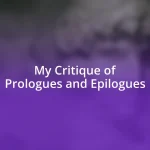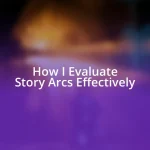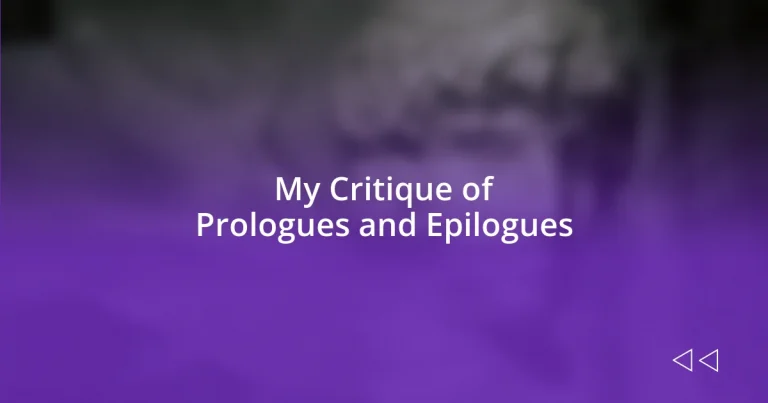Key takeaways:
- Prologues establish context, build empathy, and foreshadow events, enhancing reader engagement and emotional connection from the outset.
- Effective prologues should captivate with compelling hooks and avoid overwhelming backstory or emotional detachment.
- Strong epilogues offer closure and reflection, often leaving readers with lingering thoughts about characters’ futures and deeper emotional resonance.
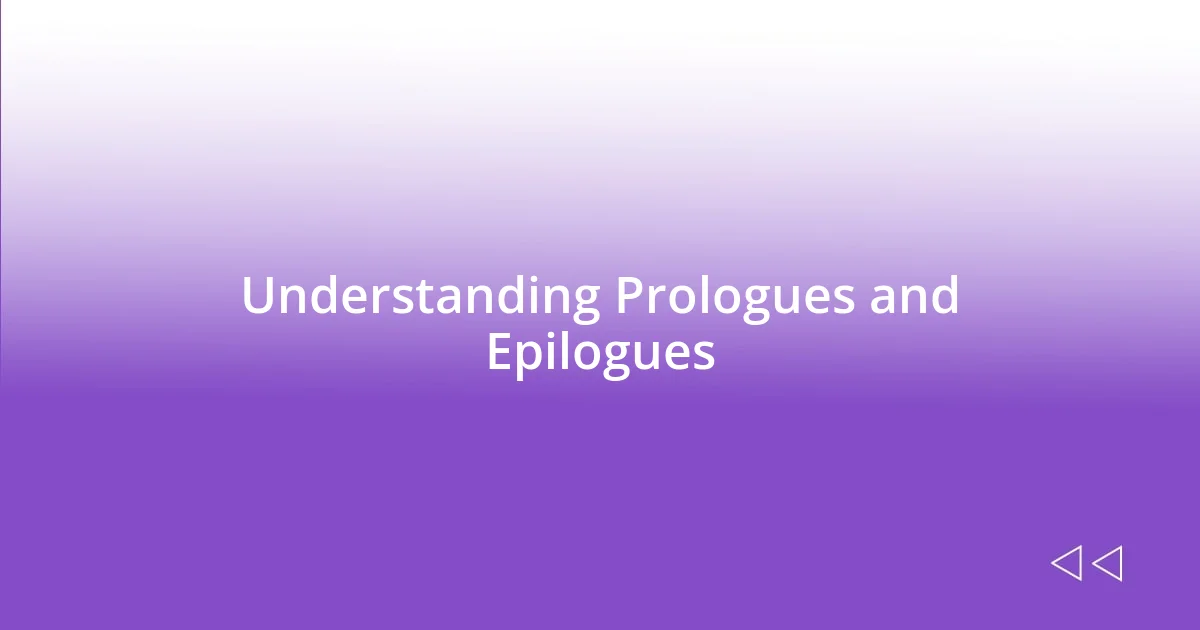
Understanding Prologues and Epilogues
Prologues and epilogues serve as crucial bookends to a story, adding depth and context in ways that can enhance our understanding of the main narrative. I remember reading a novel where the prologue revealed a pivotal event that took place years before the main story, instantly making me curious about how it would intertwine with the characters’ journeys. Isn’t it fascinating how a few carefully chosen words can set the tone and expectations for what’s to come?
An epilogue, on the other hand, allows the author to offer closure or a glimpse into the future of the characters, which can resonate with readers long after they’ve turned the last page. I once finished a book only to be surprised and moved by its epilogue, which hinted at the beloved protagonist’s legacy years later. This reflection filled me with both satisfaction and a sense of longing—who doesn’t crave a little more insight into the lives of characters we’ve grown to love?
In essence, these components are not mere add-ons; they provide essential layers of meaning and emotional resonance. Have you ever closed a book feeling wistful, just wishing you could see how things unfolded afterward? That’s where the beauty of an epilogue truly shines, offering a bittersweet balm to our yearning for a continued connection with the story.
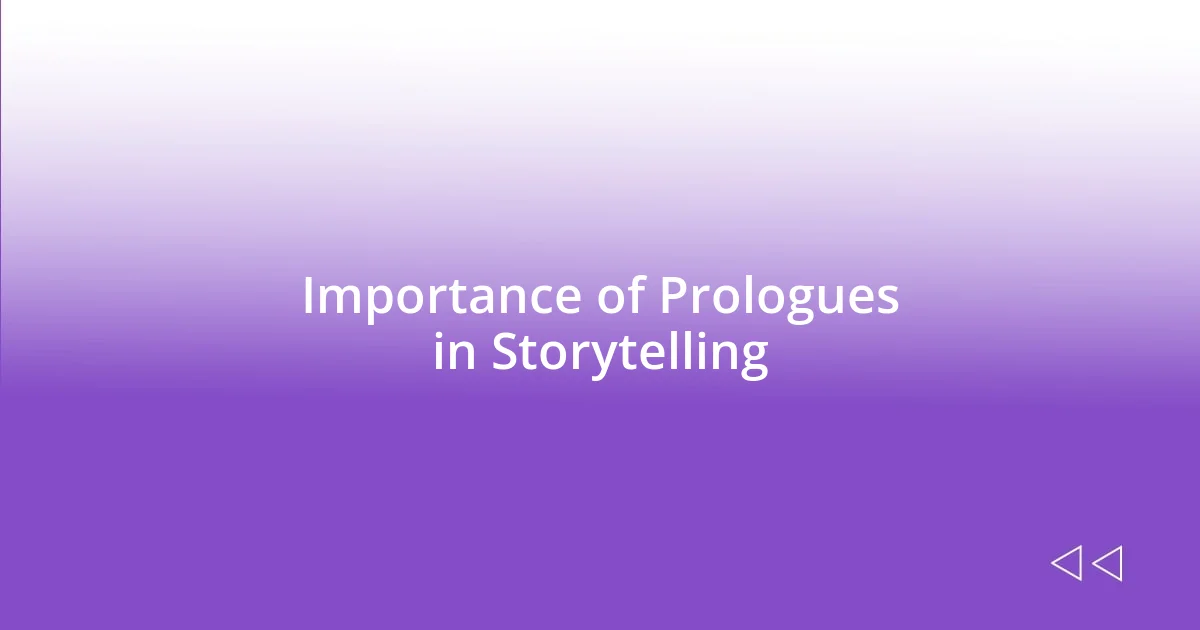
Importance of Prologues in Storytelling
Prologues play a vital role in establishing the groundwork for the story that follows. I recall diving into a fantasy epic where the prologue intricately outlined the ancient conflict that shaped the world. This context not only piqued my interest but also equipped me with the background needed to appreciate the nuances in character motivations. It’s like opening the door to a new realm and instantly being whisked away into its complexities.
Moreover, prologues can create an emotional bridge between the reader and the characters. In my experience, starting a novel with a poignant scene from a character’s past can immediately evoke empathy and set the emotional stakes high. When I read a story that began with a heart-wrenching childhood memory, I found myself rooting for the character from the very first page, invested in their journey before the main story even began. Isn’t it powerful how the right introduction can forge such a connection?
Additionally, by using foreshadowing, prologues can hint at themes and events that resonate throughout the entire narrative. I once encountered a book where the prologue hinted at a tragic choice the protagonist would face, leaving me both anxious and eager to see how this foresight would unfold. It’s a tool that not only creates anticipation but also enriches the reading experience, ensuring that every twist in the plot carries added weight in light of what was suggested beforehand.
| Aspect | Importance |
|---|---|
| Setting Context | Prologues prepare readers for the story’s themes and background. |
| Building Empathy | They establish an emotional connection with characters from the outset. |
| Foreshadowing | Prologues can hint at future events, enhancing anticipation. |
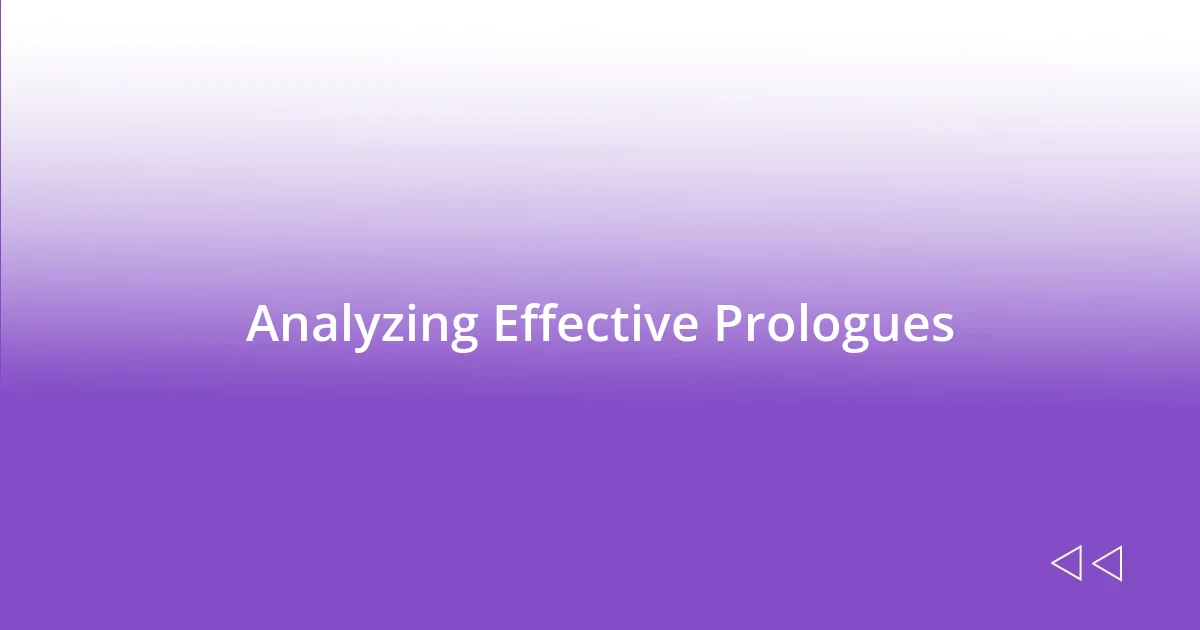
Analyzing Effective Prologues
Prologues can truly be a storyteller’s secret weapon. From my experience, an effective prologue does more than set the stage; it grips the reader’s attention with a compelling hook. I remember being drawn into a mystery novel where the prologue revealed a chilling crime that remained unsolved, compelling me to unravel the layers of the plot. This use of suspense not only set the mood but made me crave the subsequent chapters.
- A great prologue offers a striking image or scenario that resonates.
- It captures the essence of the themes to come.
- By evoking curiosity or emotional responses, it lays an engaging foundation for the narrative.
When done right, prologues can resonate on an emotional level, shaping my expectations in ways I hadn’t anticipated. In one case, an author invited me into the mind of a character facing their greatest fear in vivid detail. The feeling of dread and anticipation lingered with me throughout the book, transforming every page into a quest to confront not only the character’s challenges but my own reflections on fear. This emotional tethering equips readers for a deeper, more immersive journey.
- Prologues can establish themes of fear, love, or conflict right off the bat.
- They serve to remind the reader of their own experiences and emotions.
- Overall, they establish a pivotal connection that lingers through the narrative.
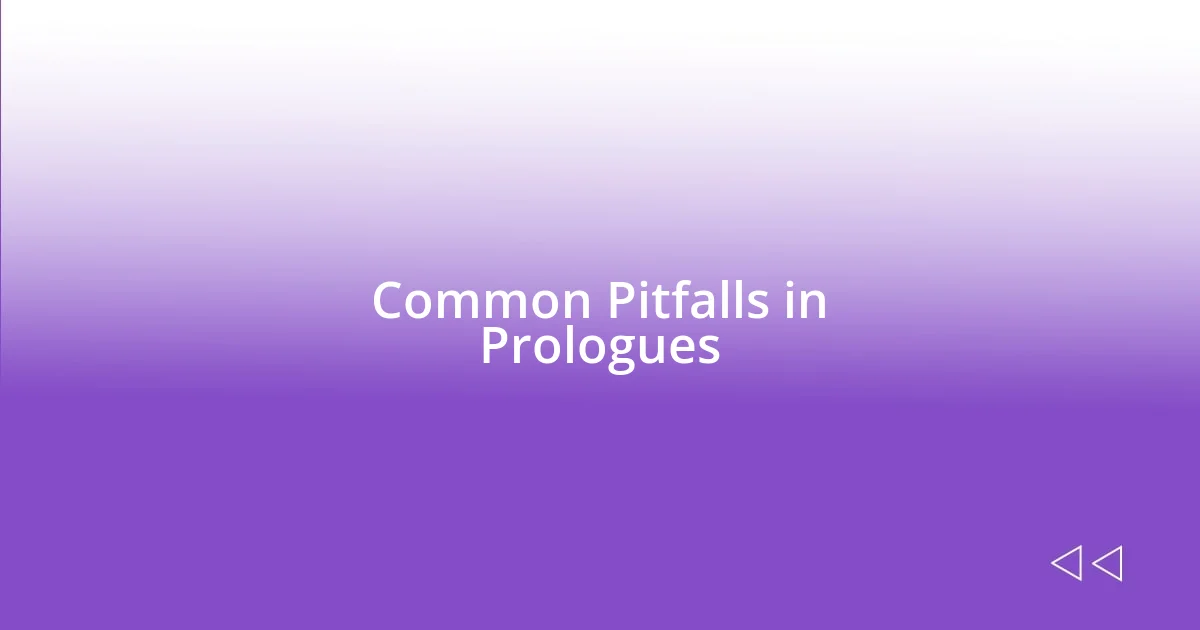
Common Pitfalls in Prologues
One common pitfall in prologues is the tendency to overload them with backstory. I remember picking up a novel where the prologue felt like a history lesson, drowning me in details about events long past. Instead of drawing me in, it left me overwhelmed and somewhat lost. Isn’t it interesting how too much information can sometimes take away the mystery instead of adding to it?
Another misstep can be a lack of emotional engagement. I once started a book with a prologue that felt dry and disconnected from the characters. It was filled with facts but failed to touch my heart. Readers need that emotional spark to feel invested; without it, the story can seem like just another tale rather than a journey we’re eager to embark on together.
Lastly, pacing is crucial in a prologue. I encountered a prologue that dragged on and on, where the tension never built. By the time I reached the first chapter, my interest had waned. A prologue should enthrall and entice—if it feels like a chore instead, it risks losing readers before they dive into the heart of the story. Have you ever felt that disinterest? I think many of us have, and it’s a reminder that a prologue should be brisk and compelling to truly capture attention.
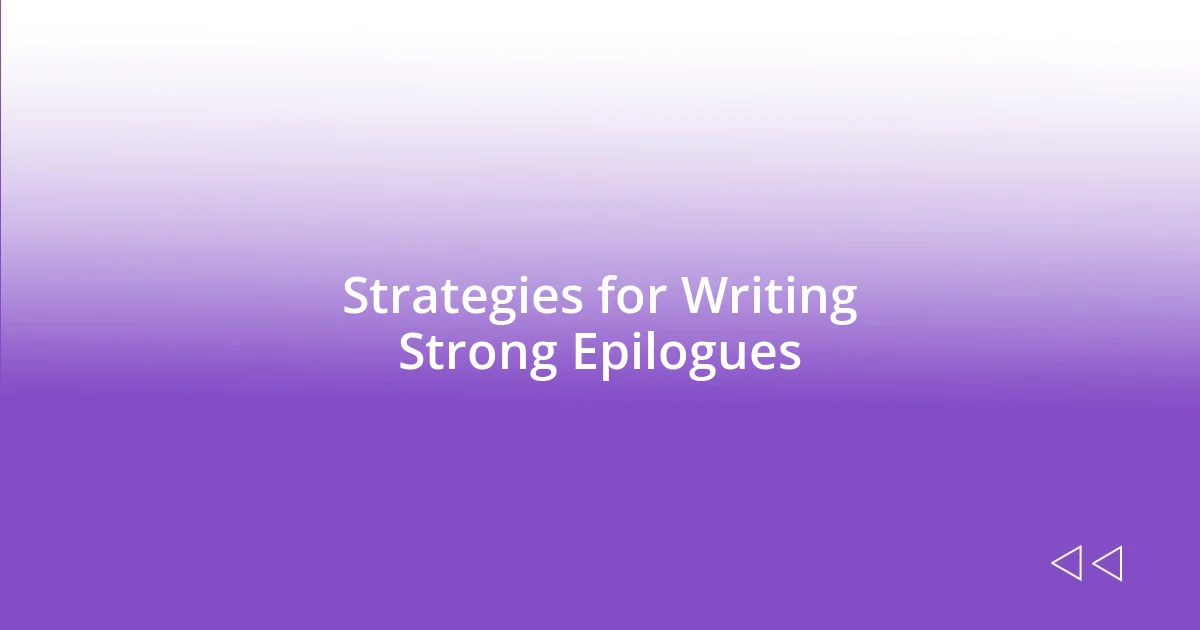
Strategies for Writing Strong Epilogues
When crafting a strong epilogue, I believe it’s vital to tie up loose ends without feeling hurried. I once read a novel where the epilogue not only revisited essential story arcs but did so with a touch of warmth and reflection. It allowed me to see how the characters evolved after the final conflict, making it feel rewarding rather than rushed. Isn’t it comforting when stories conclude with a satisfying sense of closure?
Another effective strategy is to leave the reader with a lingering thought or emotion. I recall one book where the epilogue subtly hinted at future possibilities for the characters, making me ponder their journeys long after I closed the book. Such an open-ended approach can echo in the mind of the reader, sparking discussions and interpretations that stretch beyond the pages. Have you ever found yourself thinking about a character’s future long after finishing a story? I know I have, and it often leaves a lasting impact.
Feeling authentic and relatable is key. In my experience, a personal touch in the epilogue, such as a character reflecting on their lessons learned, resonates powerfully. There was a particular story where the protagonist shared their thoughts about love, loss, and growth in a heartfelt way. This honesty created a deeper connection, as if we were sharing a moment of intimacy with the character themselves. How wonderful is it when a story feels like it understands us? That’s the kind of epilogue that stays with me.
